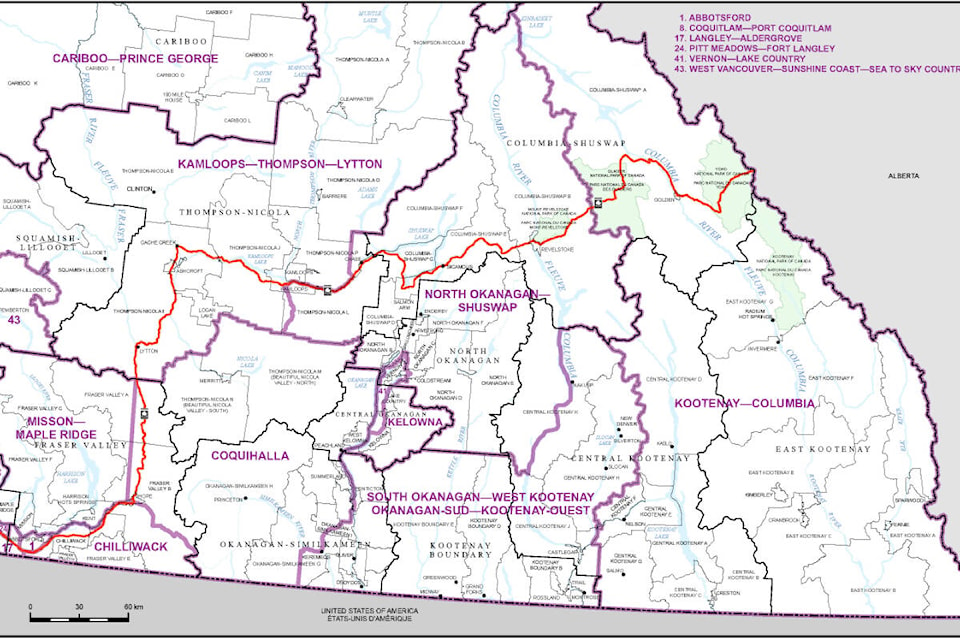Possible changes to the federal electoral boundaries in B.C. could see the province gain one additional seat, and undergo a shift in boundaries that would see Ashcroft, Cache Creek, Clinton, and Lytton as part of a newly-created riding called Kamloops-Thompson-Lytton, which would also include most of the City of Kamloops.
B.C. currently has 42 federal ridings, with Lillooet and communities along the Fraser Canyon from Lytton to Cache Creek part of the Mission-Matsqui-Fraser Canyon riding. Historically, the communities along Highway 1 as far north as Cache Creek have been aligned with a larger centre or centres in the upper Fraser Valley; before the creation of the current riding, the largest community was Chilliwack.
Clinton is currently part of the Kamloops-Thompson-Cariboo riding, which extends north to include 100 Mile House and east to include all of the City of Kamloops.
The proposed realignment would mean that Kamloops-Thompson-Lytton would include Lillooet, Lytton, Cache Creek, Ashcroft, Clinton, Savona, Logan Lake, Barriere, and Clearwater. The largest centre would be most of the City of Kamloops, which would see itself split between two ridings.
The bulk of the city — west of the Yellowhead Bridge at the junction of Highways 1 and 5 — would be in Kamloops-Thompson-Lytton. Everything east of that point, including Valleyview, Rose Hill, Dallas, and Barnhartvale south of the South Thompson River, would be in a new riding called North Okanagan-Shuswap, which would also include Salmon Arm, Sicamous, Revelstoke, Armstrong, and Enderby.
The changes are being recommended by the Federal Electoral Boundaries Commission, which has been tasked with creating additional ridings where they are warranted by population growth. The 2021 Census of Canada shows that B.C.’s population increased by 600,000 people between 2016 and 2021; enough to warrant one new riding.
The Commission must also adjust electoral boundaries to ensure that each riding is as close to the electoral quota as possible. This quota is 116,300, which is calculated by dividing the province’s population (5,000,879) by the proposed number of ridings (in B.C.’s case, 43). Historic and geographic factors also play a part in determining the boundaries.
Members of the public will have an opportunity to voice their opinions on the proposed changes to B.C.’s federal ridings at public hearings that will be held throughout the province in June and September. A hearing in Kamloops will take place at 7 p.m. on June 16 at the Coast Kamloops Hotel and Conference Centre in Aberdeen, and a virtual public hearing is planned for Sept. 28.
Residents can also send comments and feedback to the Commission by mail, email, or by using an interactive mapping tool. For more information, go to https://bit.ly/3P5e9cY. If you would like to learn more about redistribution, go to https://bit.ly/3N0VMEo.
Changes to the electoral boundaries will not come into effect until April 1, 2024 at the earliest.
editorial@accjournal.ca
Like us on Facebook and follow us on Twitter
